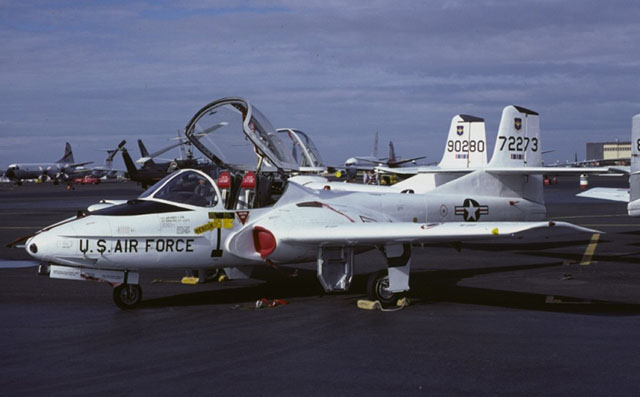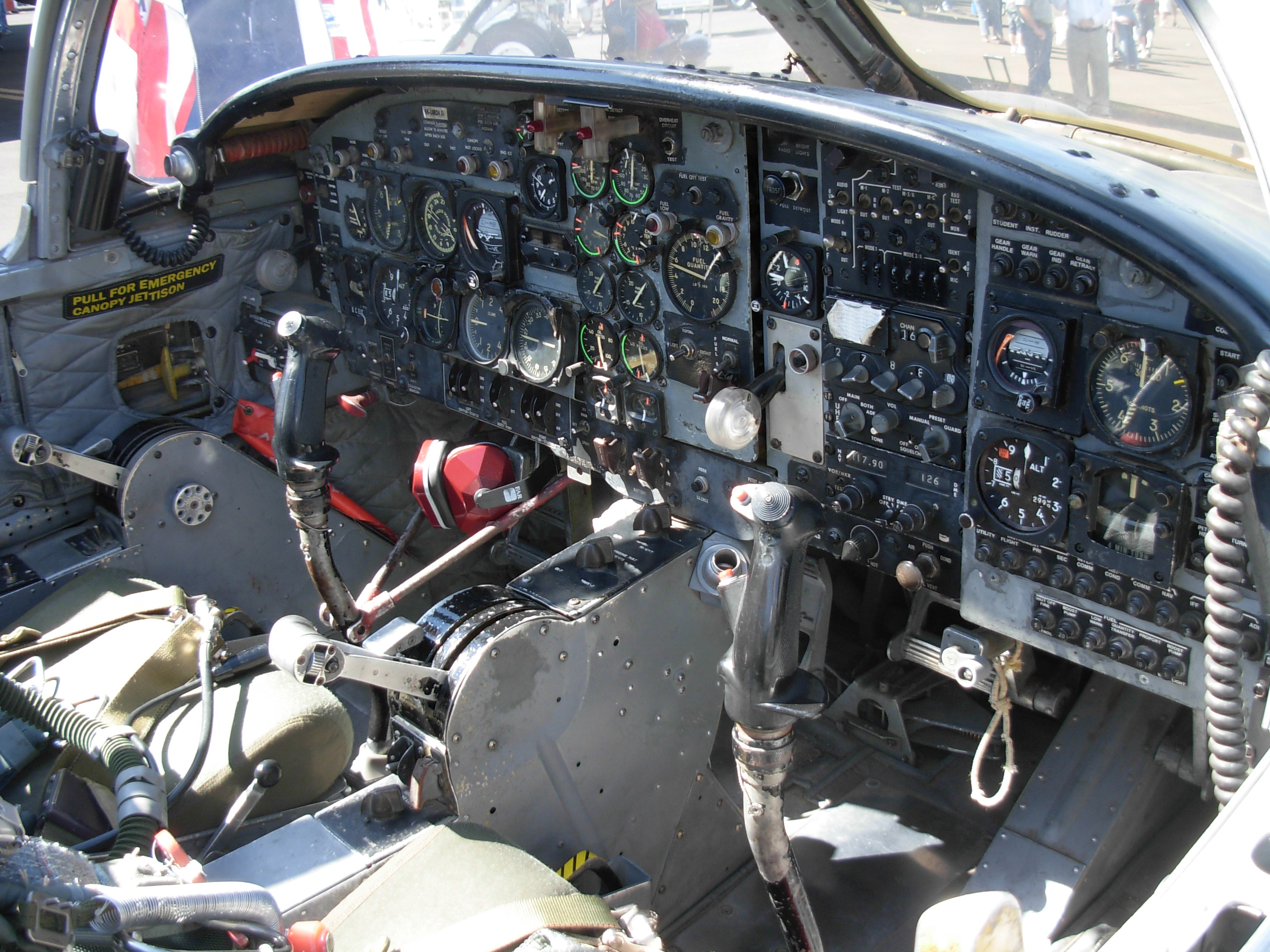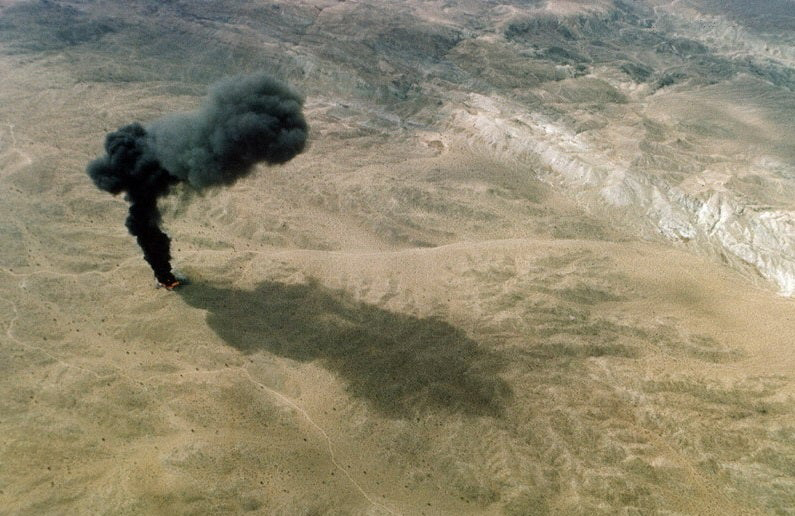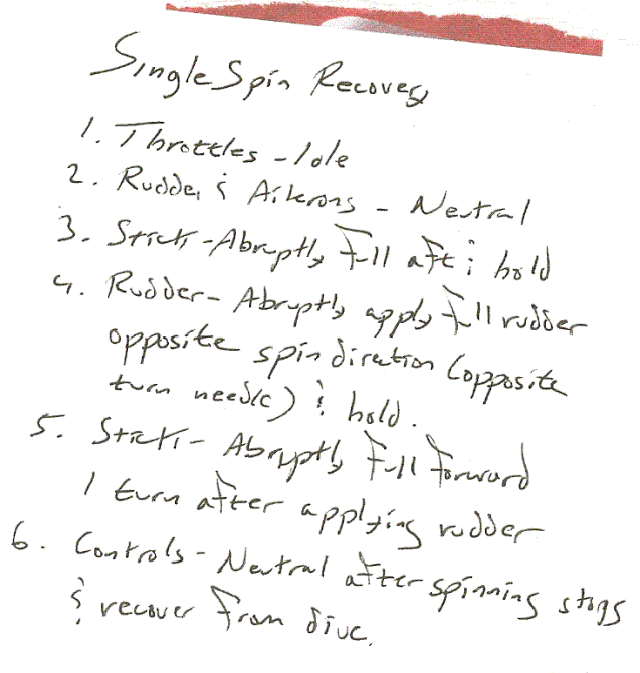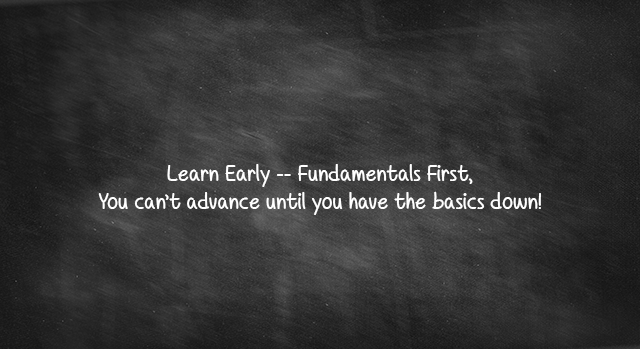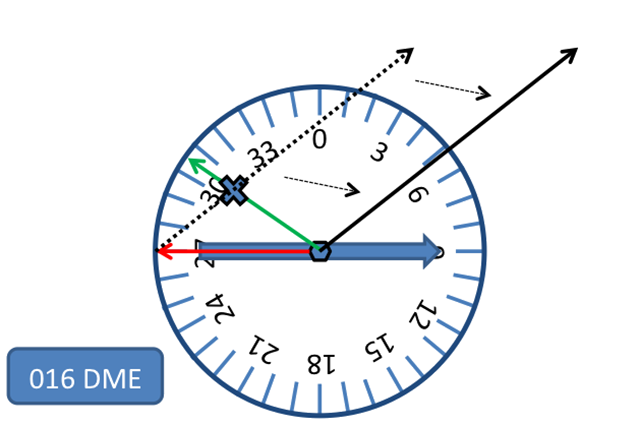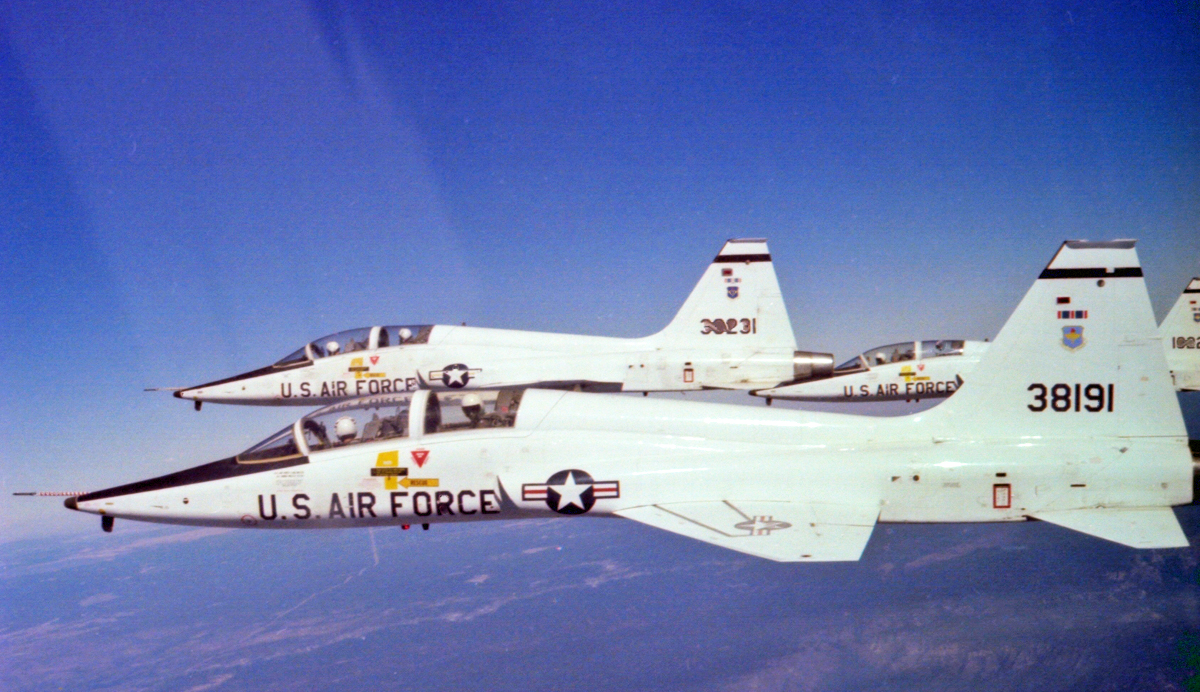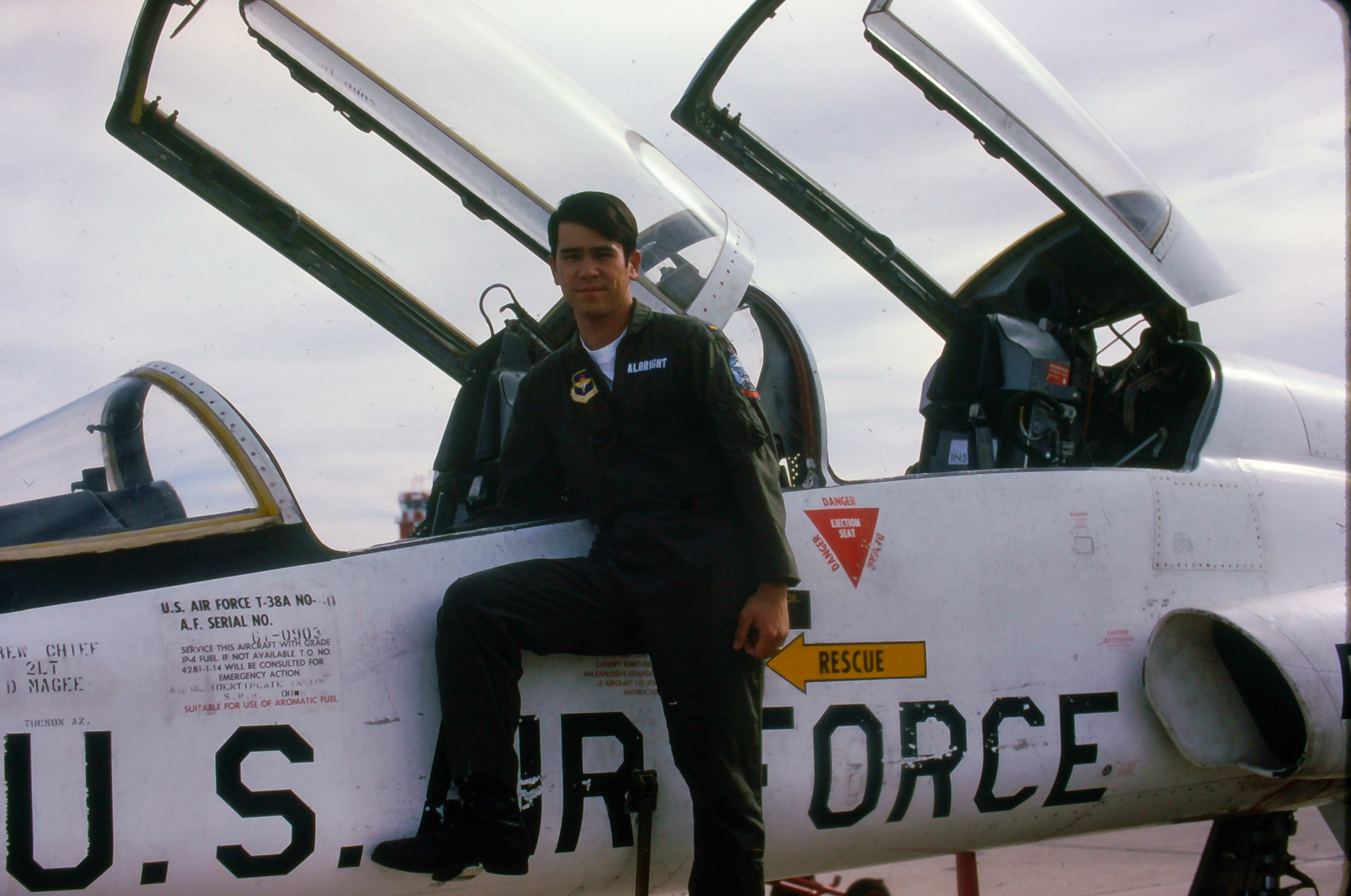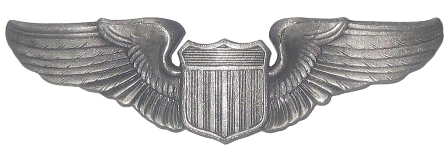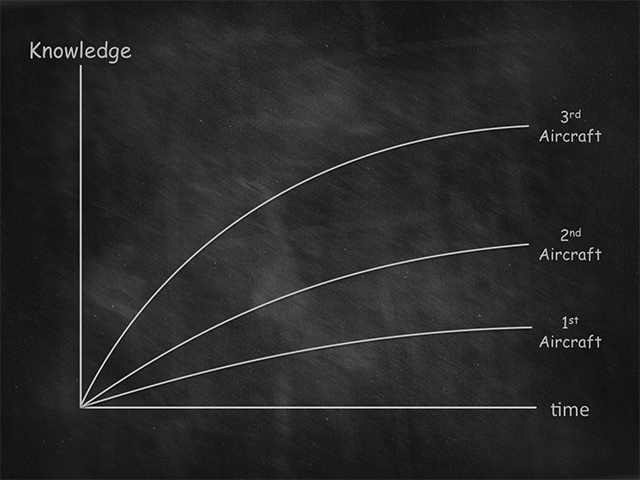"The Rules" are twenty-six ideas I've collected over the years that seemed relevant enough to life in general that I've written each down with a short story to reinforce each in particular. This is Rule Number Twenty-six.
— James Albright

Updated:
2012-06-01
Whenever you change airplanes, especially when going from one rung in the pilot ladder to the next, the learning challenge can seem impossible. Even highly experienced pilots can become overwhelmed because they never learned how to do this correctly. There is a right way and a wrong way. In 1979, I was fortunate to have the guidance of Vietnam veteran and graduate of the Air Force School of Lessons Learned the Hard Way, Major Howard Lestershire.

Learn early, start from zero and add from there
1979
When I showed up at Williams Air Force Base, near Phoenix, Arizona, I had a total of 25 hours pilot time in a Cessna 150. About half that time was solo, and just about all of it was as a clueless pilot “wanna be” with just a few fundamental ideas of what makes airplanes fly. My first flight as an Air Force officer would be in the Cessna T-37, a fully aerobatic, twin-engine jet.
The instrument panel was what we called a “shotgun” panel. They blasted a clean piece of aluminum with a shotgun, and wherever they found a hole they put in a dial, switch, or whatever else they could find from the cheapest bidder. While most Air Force pilots talk of the T-37 “Tweet” with disdain, it was an intimidating piece of hardware for the brand new second lieutenant in Air Force Undergraduate Pilot Training. I was in a class of 77 student pilots, 70 of us wearing the proverbial “butter bars” of second lieutenants.
“Write this down, boys and girls,” Major Lestershire said to our all male class on Hour One of Day One. “This is step one to becoming a fire-breathing killer in this man’s Air Force.” He wrote on a chalkboard as we dutifully added to our blank notebooks.
“You are going to be drinking from a fire hose, gents,” he continued. “We have scientific proof that your brain is programmed to learn when you are fresh from sleep. If you have two hours to give for study, you are better off doing that from 0500 to 0700 than after a night of bar hopping at 2400 to 0200. Who in here is a morning person”?
Nobody raised his hand.
“Well my advice to you,” he said, “is become one. We wash more guys out because of this,” he said pointing to his head, “than this,” he said, waving his hands. “You have a lot of learning to do, so let’s get started.”
We spent each morning that week knee-deep in academics. We covered everything from airplane aerodynamics to human physiology. In the afternoons we learned practical skills, like how to eject from our aircraft and survive a parachute-landing fall. I woke up each morning, as instructed, at 0500 and studied. For the first time in my life, I was becoming a morning person. I started to rack up an impressive list of tests aced and started to think I could learn just about anything, given enough time. But we never had enough time.
The next week we added another textbook to the five we already had, this one about T-37 flight procedures. Major Lestershire broke the news to us gently.
“Anyone who fails to memorize the T-37 single spin recovery will become a smoking hole in the Arizona Desert,” he said. “Of this I am certain.”
How hard can it be? I turned to the page in the textbook and stole my first glance at the procedure that I still have memorized, nearly forty years later.
“The single spin recovery is not single in that it is the only spin recovery you need to know,” he continued. “It is the single spin recovery because it is the only spin recovery that will work for any aircraft you will fly for the rest of your lives as pilots. You might as well memorize it. But not only that, you must memorize all six steps in the correct order. You will also memorize all 43 words, in the correct order. You will not abbreviate, except for the ampersand, of which there are four. You will write out all 43 words, including those ampersands every morning and you will not be permitted to fly unless you do this precisely.”
“You will be tempted,” he said, “to push this off until later. You still have seven written exams to pass and your first flight is still two weeks away. But you must not give in to this temptation. Remember, learn early.”
I set out striving to get all 43 words down immediately. The next morning we were presented with a blank sheet of paper awaiting those 6 steps and 43 words. I got all the words but I reversed steps 3 and 4.
“Smoking hole,” Major Lestershire said of my work. “You will become a smoking hole unless you improve.”
No one in the class got it just right, but on the second day two of us did. Of course there were no congratulations, only more talks of holes aflame and another chalkboard hint.
“There is a connection between this,” Major Lestershire said, holding his right hand up, “and the memory cells in your brain. If you have to memorize something precisely, write it down over and over again. It doesn’t even have to legible. Just write it down and then throw it away. You might as well add to your memory chores now.”
He passed out mimeographed pages with about a hundred items with a blank space next to each. They were the T-37 limitations that we would have to memorize or become . . . a smoking hole. That night I filled out the first of many. In a week I had all one hundred items memorized. My right hand was teaching those memory cells after all. I wish I had this trick during college.
Our class made it through academics with 5 washouts, students who couldn’t get the memorization just right. As we started to fly we progressed from timid and tentative sheep to flying tigers. A few washed out for airsickness during the aerobatics and a few more for failing to grasp the concept behind the very tight landing patterns. But most of our washouts were from pilots who couldn’t execute those 43 words as the airplane was falling from the sky.
Those of us who graduated from the “contact” to the formation phase started walking with a new confidence and swagger. We had learned what we needed to know to start flying mere inches away from our wingmen while flying aerobatics and pretend dogfights. But along with this fun, we were presented with yet another list of unmemorizable procedures that had to be memorized.
These procedures included how to intercept a navigation course inbound or outbound, how to visualize and fly a fix-to-fix navigation problem, and how to fly each of five different types of instrument approaches. Each procedure had a long list of steps that needed to be executed precisely and at a moment’s notice.
With each new skill came another to learn. As our class progressed deep into formation (fun), low level navigation (fun), and instrument flight (not fun), the washouts accumulated. Nobody washed out for formation. We might have had one or two from low level navigation. No, most of our washouts were for instrument procedures. As I returned from my last T-37 flight in the program, some students were still struggling with basic course intercepts. Learn early: Fundamentals first!
I walked out of the T-37 squadron with 86 hours of jet time. I had flown all manner of aerobatics and two-ship formation solo. I was a confident instrument pilot. I had achieved the Air Force’s objective converting me from a pilot that strapped into an airplane, into a pilot who strapped on an airplane. But none of that counted because I was going to the “fast mover.”
The T-38 “Talon” is a supersonic jet that can fly faster than any pilot can think and had a track record of producing more smoking holes than just about any aircraft in the USAF inventory that year. In my mind I had mastered the T-37 and the next airplane was just the next airplane.
“The pointy end goes in front,” our first T-38 academic instructor said. “This is unlike any airplane you’ve ever flown.”
The T-38’s symmetrical wing produced zero lift at zero angle of attack, so our lives would literally be controlled by AOA in the “white rocket.” We had to relearn the very concept of lift and drag, because all those familiar terms wore new, more imposing definitions.
So we new T-38 pilots had to start over in many respects and that seemed a bit belittling to some. But for those of us who were paying attention, our T-38 learning curves took us to altitude much more quickly. We had learned how to learn in the T-37, and that helped us to learn in the T-38. In another six months, most of us were strapping on the Talon just as we had the Tweet. Of our original 77, we showed up on graduation day with 44.
That was November 29, 1979. Since then I’ve moved on to the KC-135A tanker, the EC- 137J (Boeing 707), E-4B (Boeing 747), C-20B, C, and A (Gulfstream III), Challenger 604, Gulfstream V, IV, and now the 450. The learning process has been the same for each and Major Lestershire’s advice has proven to be true.
So what does a second lieutenant’s year in Air Force pilot training have to do with today’s civilian pilot trying to get that next rating? Everything. Learn the basics as soon as you can, get them down cold. That frees you for new lessons later on. While this may not be optimal for you, I’ve always found this pattern works best for me:
- Memorize what needs to be memorized, and do that quickly.
- What has to happen to start the engines? There will be a specific sequence of events, many of which will have go/no-go decision points.
- What has to happen to successfully take off? Many airplanes have several steps before the “rotate” call and you need to have these memorized.
- What has to happen to successfully abort the takeoff? You don’t have time to think this through; your reaction must seem instinctive.
- What do you do if you lose cabin pressurization? At higher altitudes, your response needs to be deliberate and without hesitation.
- What is the sequence of events for a missed approach? Not only do you have to press what needs to be pressed and actuate what needs to be actuated, you will have to check engine performance, climb performance, and navigation.
- Learn the “how” and “why” behind new territory for you as a pilot.
- Going from a reciprocating to a turbine engine means you need to learn how getting an engine started in flight might require rethinking airspeeds and altitudes. Going from props to jets means you might have to relearn the concept of maximum endurance and range. On many jet engines, turbine spool up time can mean you will not have power as quickly as you want. Do you know the difference between thrust and power? Not knowing the difference can leave you in an unrecoverable situation. See: Thrust versus Power.
- A swept wing airplane can fly higher and faster than a straight wing, but it can also stop flying sooner. The swept wing stalls differently and deserves special respect at lower speeds. A T-tail airplane adds even more complications.
- If you are used to flying in mph, kph, or knots, life will change for you when you start flying in Mach number.
- Scan the systems section of your new flight manual and look for foreign concepts. If you’ve only flown aircraft with cables between you and the flight controls, you need to get up to speed on whatever faces you now. Other pilots may tell you your full-time hydraulic flight controls are just like those on a conventional airplane, but don’t believe them. You need to understand everything that happens between you and the elevator when you pull back on the yoke.
- Master the terminology
- Different aircraft can use different terms for similar systems or procedures, just as the operating environment can require a new dictionary.
- The advantage of being new to an airplane is everyone expects you to ask questions, so ask.
- Figure out the “make it or break it” list between you and the next rating.
- The training syllabus should outline what has to happen for each successful check ride. You should scan this list early to get an idea of what is completely foreign to you and where your attention is needed.
- The syllabus should introduce these concepts in a logical sequence so skills learned early will complement those needed later. Remember you need to master the basics before moving on to the more advanced concepts.
- Check your ego at the door (you are starting from “zero”)
- No matter your previous experience you are in a new airplane so you must be in learn mode.
- You will make mistakes, but your experience will allow you to learn from your mistakes more quickly. So take advantage of that.
- Your instructor may have less experience than you and might be a lousy pilot, but he or she is getting paid to teach and you are getting paid to learn. Give the instructor the benefit of the doubt and hold substantial critiques for the end.
- Invite critique
- Your instructor may be intimidated by you or may just be lazy. In either case, you will be deprived of learning opportunities if they withhold critique. You should ask for critiques and react positively.
- You should also be self-critical. Try to examine your performance as if you were examining someone else.
- Always remember your learning curve bends
- Every time you “start from zero” your learning shoots up very quickly and then starts to taper.
- As you move from success to success, each successive learning curve spends less time at zero and shoots up more quickly.
- But if you keep these things in mind, you will find that not only does the learning curve shoot up more quickly, it goes higher with each try.
While few airplanes permit the “smoking hole” risk, many airplanes have procedures that need to be memorized before you can progress from one stage of training to the next, or to pass a check ride. Here are just a few examples.
While it may seem obvious, it can elude you when going from one model of an airplane to another. Going from a Cessna 152 to a Cessna T-37 required a complete change of thinking. But what about from a Cessna Citation V to a Citation X? Or even the other way around. You need to examine the new airplane and figure out how it does what it does, especially if you’ve never seen it before. Here are a few examples.
References
(Source material)
Dole, Charles E., Flight Theory and Aerodynamics, 1981, John Wiley & Sons, Inc, New York, NY, 1981.
